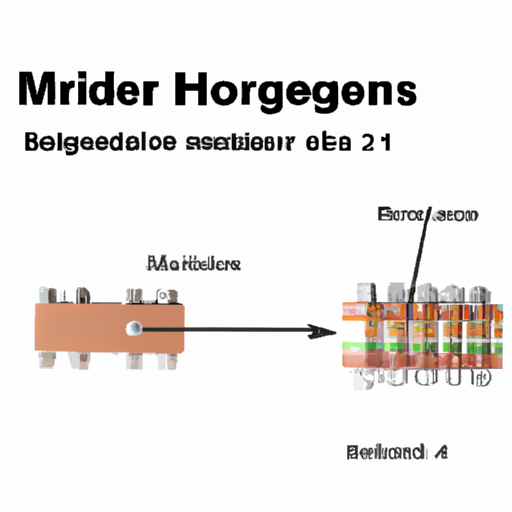Overview of MM74HC241N and Bridge Rectifiers
MM74HC241N is a high-speed CMOS octal buffer/driver with 3-state outputs, primarily used in digital circuits for signal buffering and driving capabilities. While it is not a bridge rectifier, it can complement bridge rectifiers in applications where signal integrity and control are essential.

Bridge Rectifiers are critical components in power electronics, designed to convert alternating current (AC) to direct current (DC). They consist of four diodes arranged in a bridge configuration, allowing current to flow in one direction regardless of the input AC voltage's polarity. This functionality is vital for powering various electronic devices and systems.
Core Functional Technology of Bridge Rectifiers
1. Diode Configuration: The bridge rectifier's four-diode arrangement enables it to utilize both halves of the AC waveform, effectively doubling the output voltage compared to half-wave rectifiers.
2. Full-Wave Rectification: By providing full-wave rectification, bridge rectifiers yield a smoother DC output with reduced ripple, making them more suitable for powering sensitive electronic devices.
3. Voltage Drop: The forward voltage drop across the diodes (approximately 0.7V for silicon diodes) is a critical design consideration, as it impacts the overall efficiency and output voltage of the rectifier.
4. Heat Dissipation: Due to power losses in the diodes, bridge rectifiers can generate significant heat. Effective thermal management, including heat sinks, is essential for maintaining reliable operation.
5. Capacitance Filtering: To achieve a stable DC output, capacitors are often employed alongside bridge rectifiers to smooth out the voltage and minimize ripple.
Application Development Cases
| 1. Power Supply Units (PSUs) | |
| 2. Battery Chargers | |
| 3. Motor Drives | |
| 4. Renewable Energy Systems | |
| 5. LED Drivers | |
Conclusion
Bridge rectifiers are essential components in various electronic applications, efficiently converting AC to DC. Their integration with components like the MM74HC241N enhances signal integrity and driving capabilities in digital circuits. A thorough understanding of the core functional technology and application development cases of bridge rectifiers is crucial for engineers working in power electronics and related fields. This knowledge enables the design of robust, efficient, and reliable electronic systems across a wide range of applications.
Overview of MM74HC241N and Bridge Rectifiers
MM74HC241N is a high-speed CMOS octal buffer/driver with 3-state outputs, primarily used in digital circuits for signal buffering and driving capabilities. While it is not a bridge rectifier, it can complement bridge rectifiers in applications where signal integrity and control are essential.

Bridge Rectifiers are critical components in power electronics, designed to convert alternating current (AC) to direct current (DC). They consist of four diodes arranged in a bridge configuration, allowing current to flow in one direction regardless of the input AC voltage's polarity. This functionality is vital for powering various electronic devices and systems.
Core Functional Technology of Bridge Rectifiers
1. Diode Configuration: The bridge rectifier's four-diode arrangement enables it to utilize both halves of the AC waveform, effectively doubling the output voltage compared to half-wave rectifiers.
2. Full-Wave Rectification: By providing full-wave rectification, bridge rectifiers yield a smoother DC output with reduced ripple, making them more suitable for powering sensitive electronic devices.
3. Voltage Drop: The forward voltage drop across the diodes (approximately 0.7V for silicon diodes) is a critical design consideration, as it impacts the overall efficiency and output voltage of the rectifier.
4. Heat Dissipation: Due to power losses in the diodes, bridge rectifiers can generate significant heat. Effective thermal management, including heat sinks, is essential for maintaining reliable operation.
5. Capacitance Filtering: To achieve a stable DC output, capacitors are often employed alongside bridge rectifiers to smooth out the voltage and minimize ripple.
Application Development Cases
| 1. Power Supply Units (PSUs) | |
| 2. Battery Chargers | |
| 3. Motor Drives | |
| 4. Renewable Energy Systems | |
| 5. LED Drivers | |
Conclusion
Bridge rectifiers are essential components in various electronic applications, efficiently converting AC to DC. Their integration with components like the MM74HC241N enhances signal integrity and driving capabilities in digital circuits. A thorough understanding of the core functional technology and application development cases of bridge rectifiers is crucial for engineers working in power electronics and related fields. This knowledge enables the design of robust, efficient, and reliable electronic systems across a wide range of applications.